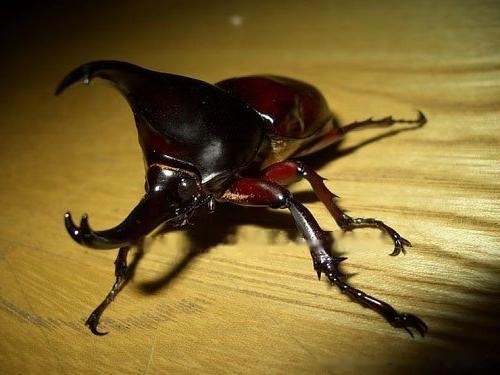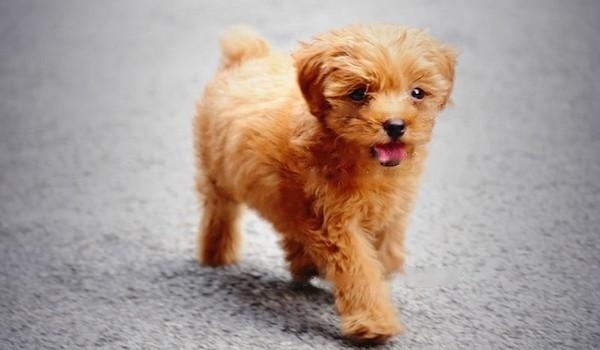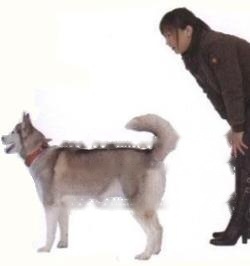Ji Cupworm, also known as the rubber rhinoceros beetle, is distributed in southern China, Taiwan Lanyu, Green Island, Indochina, the Malay Peninsula, the Philippines, Indonesia, and northern India. It is a relatively easy-to-raise beetle, and many people like it, so what are its morphological characteristics?

Jibei
Egg morphological characteristics
Round, about 3mm long, milky white to dirty yellow. The eggs are oval when they are laid, and then gradually become round after absorbing the surrounding water. And the color also gradually changed from the milky white that was just produced before to yellow, and finally became transparent about the first 2 or 3 days after hatching. It can be seen that the larvae inside are curled up inside the eggs, and the stomata are more obvious. The eggs hatch in about 2 weeks.
Morphological characteristics of larvae
The head shell is yellow-brown to brown-black, the color of the head shell of newly hatched or just molted larvae is lighter, yellow-brown, with growth The color of the 3rd instar larvae was brownish black as the instars increased.
1st age: the head shell is yellowish brown, about 2mm wide, about 4~7mm long and 2~4mm wide. Tender milky white and translucent at the beginning of hatching, with growth, the color deepens, and the whole body is covered with light yellowish brown hair; the stomata are very small, inconspicuous, and the edge is yellowish brown; there is a pale brownish yellow spot on the first abdominal segment, which is small and inconspicuous ; Feet pale yellow, covered with tawny hairs.
2nd age: the head shell is brown, about 3mm wide, about 31~55mm long, and about 6~14mm wide. White, the body is more opaque, and the food is faintly visible in the abdomen; the lateral trachea is clearly visible, the periphery is brown, and the body is covered with long yellow-brown hairs. The brown spot above the first abdominal throttle is large and obvious, pale yellowish brown; the foot is pale yellowish brown.
3rd age: the head shell is brown and black, about 8mm wide; the body length is about 80~121mm, and the width is about 15~20mm. White in the initial stage, yellowish-brown in the mature larvae, and completely transparent; the lateral stomata are very obvious, the periphery is darkened, the brown spot above the first abdominal throttle is large and obvious, and the color is darker; the feet are yellowish-brown; the body hair is thick, hard, and short , very obvious. Morphological characteristics of pupa: about 23-55mm long, white at the beginning, yellowish-brown at the later stage, the male horns are more obvious, and the color becomes darker before eclosion. Yellowish-white, darkened before emergence, with 4 tooth-like protrusions in front of mouthparts, and male pupa with obvious horn-like protrusions.
Morphological characteristics of adults
Dioecious, males were significantly larger than females, oblong. The body is reddish brown to dark brown, and the elytra are often slightly lighter in color and extremely bright. The head is small, the lip base is short, and the front edge has 2 tooth-shaped protrusions. There are 3 lateral spines on the upper side of the tibia of the forefoot, and 4 spines on the outer side of the tibia of the middle and hind feet. Male: body length 35~44mm, width 18~24mm; male head and pronotum have a nearly triangular powerful single-forked horn, the head and forehead are upturned and curved backward, and the fork at the end is relatively small. Deep, the horns of the worst-developed individuals are small and short, nearly perpendicular to the head, and not curved backward; the horns of the pronotum dorsal plate are partially forked down, and only traces of the horns are seen in the worst-developed individuals; the pronotum is bright and smooth , Occasionally a small number of scattered rough engraving points; the small scutellum is nearly equilateral triangle, the elytra buttocks are prominently elevated [1], and the small scutellum and elytra are smooth. Female: body length 31~34mm, body width 17~19mm. The head and face are rough without horns, and there is only one pair of mounds in front of the forehead, which are vaguely visible, and the pronotum is simple. Pronotum and elytra densely dotted with small engravings. The rest of the characteristics are the same as the males.
![[Dog Training 5] The training method of pet dog dining etiquette](/static/img/12192/12192_1.jpg)




